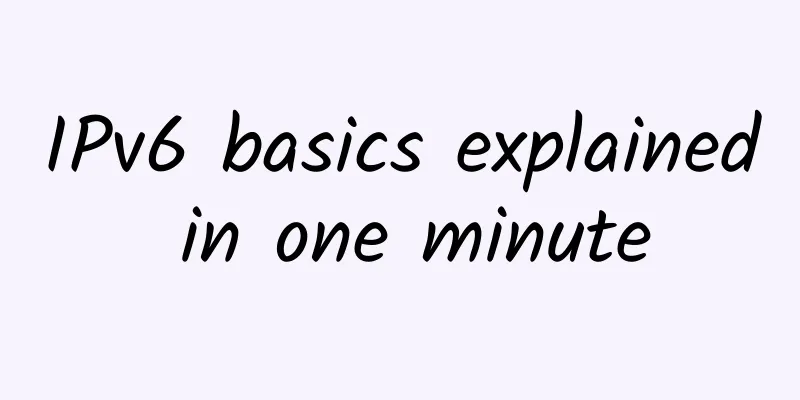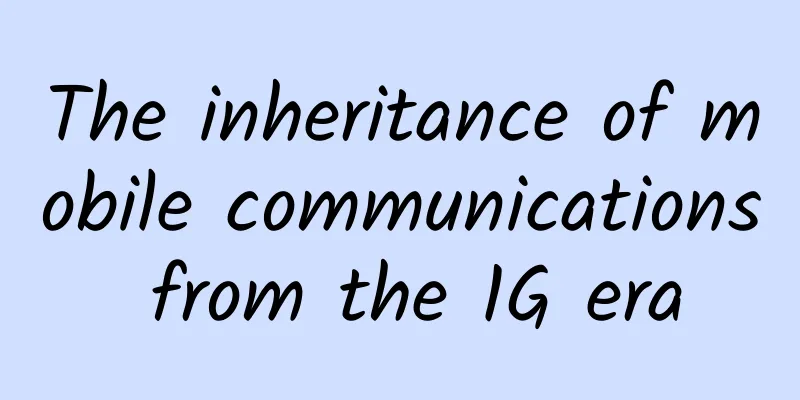IPv6 basics explained in one minute

|
1. IPv6 Background The most fundamental change of IPv6 is that it provides the future demand for globally identifiable address space. Applications based on mobile devices, such as personal digital devices (PDAs), mobile phones, cars, home networks and other mobile data communication devices all require globally identifiable addresses. IPv6 expands the number of network address bits from 32 to 128 bits, which means that a unique address can be provided for any device on the earth that needs to be connected to the Internet. It is precisely because of the globally identifiable addresses that IPv6 provides global address accessibility, end-to-end secure communications, and support for all applications and services that require addresses. In addition, the rich IPv6 address space eliminates the NAT (Network Address Translation) bottleneck in the network and improves network efficiency.
2. IPv6 address format Since IPv6 addresses are 128 bits long, they are much more complex to represent than 32-bit IPv4 addresses. Currently, IPv6 addresses are represented by a string of hexadecimal numbers, with each 16 bits separated by a semicolon (:), in the following format: x:x:x:x:x:x:x:x. Below are two examples of IPv6 addresses:
Normally, IPv6 addresses contain consecutive zeros. To avoid the complexity of IPv6 address representation, consecutive zeros can be abbreviated to two colons (::). able1 lists the abbreviated format of IPv6 addresses. Two colons can be used as part of an IPv6 address. You can configure multiple addresses on an interface, but only one link-local address. Note that two colons (::) can only appear once in an IPv6 address and can only represent the longest consecutive zeros. Unicast Address An IPv6 unicast address is used to identify an interface of a network node. When the destination address of a data packet is a unicast address, it will be sent to the network interface identified by this address. An IPv6 router should support the following unicast address types:
1. Global address that can be aggregated An aggregatable global address is an address with a global aggregatable IPv6 prefix. This structured global unicast address allows for strict aggregation of routing prefixes, which can greatly reduce the number of routes in the entire routing table and reduce routing complexity. Aggregatable global addresses are used to mark link addresses and can be used for multi-level routing aggregation, all the way to the top Internet Service Providers (ISPs). Global aggregatable IPv6 addresses are defined as global routing prefixes, subnet numbers, and interface addresses. Except for addresses starting with binary 000, all global IPv6 unicast addresses have a 64-bit interface address. Currently, the allocation range of global unicast addresses starts with binary 001 (2000::/3). 2. Site-Local Address A site-local address is an IPv6 unicast address with the prefix FEC0::/10 and the 16-bit subnet number plus the 64-bit EUI-64 format. Site-local addresses are very similar to the private address space 10.0.0.0/8 in IPv4; they can be routed within a region without the need for a globally unique address prefix. Site-local addresses can be considered private addresses because they can only be used within a strictly limited region. 3. Link-Local Address A link-local address is an IPv6 unicast address with a link-local prefix of FE80::/10 (1111 1110 10) that is automatically generated using a modified EUI-64 address format. Link-local addresses can be used in the neighbor discovery protocol and the stateless autoconfiguration process. Nodes on the same link can communicate using link-local addresses; no site-local addresses or global unicast addresses are required. 4. IPv6 addresses compatible with IPv4 An IPv4-compatible IPv6 address is an IPv6 unicast address with all 0s in the upper 96 bits and an IPv4 address in the lower 32 bits. This IPv4-compatible IPv6 address can be expressed as 0:0:0:0:0:0:ABCD or ::ABCD. The entire 128-bit IPv4-compatible IPv6 address is the IPv4 address of the network node directly implanted into the lower 32 bits of the IPv6 address. IPv4-compatible IPv6 addresses are used to use automatic tunneling technology (tunnels) when running IPv4 and IPv6 dual stacks. 5. IPv6 address type: Anycast address An anycast address is an IPv6 address belonging to the interfaces of multiple network nodes. A data packet with an anycast address as the destination address will be forwarded to the nearest network interface; the distance of the interface is determined by the result of the routing calculation. Anycast addresses are inseparable from unicast addresses in terms of address structure, because anycast addresses exist in the address space of unicast addresses. But when a unicast address can be received by more than one network interface, it is an anycast address. Anycast addresses need to be clearly defined on the network node: this address is an anycast address. 6. IPv6 address type: Multicast An IPv6 address with a prefix of FF00::/8 (1111 1111) represents an IPv6 multicast address. When the destination address of a data packet is a multicast address, it will be copied and forwarded to multiple network receivers. The second octet of the multicast address prefix represents the range of the multicast address. This octet is divided into two parts: the first four bits are 0000, which represents a permanent multicast address, and the first four bits are 0001, which represents a temporary multicast address; the last four bits represent the multicast range, and currently 1, 2, 5, 8, or E are defined, representing different multicast ranges. As shown in Figure 6. For example: the multicast address prefix is FF02::/16, which represents a permanent multicast address in the link range. |
<<: After reading the long connection in HTTP protocol, most programmers collected it...
>>: HTTP knowledge points, a must-know in the exam
Recommend
The 5G process will not be interrupted, and the short-term impact of the epidemic on the optical communications industry is controllable
During the past Spring Festival, the novel corona...
Build a reliable network and lay the foundation for Wanfeng Aviation Town’s “space dream”!
[[394988]] The 14th Five-Year Plan will accelerat...
The world's first commercial Gigabit LTE network and terminal launched
Qualcomm, Telstra, Ericsson and NETGEAR recently ...
Wi-Fi 6 is not yet popular, so why has the latecomer Wi-Fi 7 become a battlefield for giants?
When it comes to Wi-Fi, everyone is familiar with...
Connecting the industrial ecosystem, 5G accelerates the empowerment of thousands of industries
As the saying goes, a single tree cannot make a f...
CUBECLOUD new Hong Kong international line monthly payment starts from 39 yuan
CUBECLOUD (Magic Cube Cloud) recently launched a ...
A survival guide for communications professionals
The situation in 2022 is more serious than expect...
Practical Tips for HTTPS Deployment on Large Websites
1. Introduction to HTTPS HTTPS (full name: Hyper ...
What are the differences between VLAN and VXLAN? What are the application scenarios of VXLAN?
With the development of network technology, cloud...
The ancestral motto of data center operation and maintenance is "no trouble, no failure"
Although the saying "no trouble, no failure&...
Trend analysis: How to make 5G technology more down-to-earth from MWC
At MWC two years ago, we heard people imagining w...
V5.NET is 30% off in July, and monthly payment starts from HK$525 for new Korean servers
V5.NET has launched new products. This month, the...
LOCVPS Double 11 Top up 300 get 50, all VPS 20% off
LOCVPS (Global Cloud) has announced the Double 11...
Is the network model seven layers, five layers, or four layers?
When we are doing network development, we often h...









